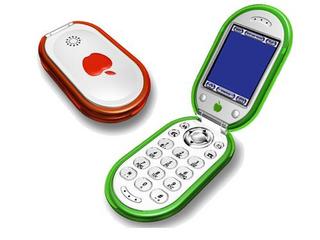
MVNO is hot in the US. Russell points out quite a few examples while Forbes.com claims that the Cupertino giant is planning to roll out its own soon.
While I don't think that an MVNO strategy is appropriate to many of the big brands, it makes perfect sense why Apple should do it.
Here are 7 good reasons:
- Apple is an existing strong customer brand, familiar to the masses. Not only that, but people are already used to purchasing Apple hardware (iPod, PowerBook), as well as services (iTunes tracks, etc.). Many people I know admitted that their main motivation for purchasing an iPod was the design of the hardware. Guess what? What's the main selling point of mobile phones today? Think about the RAZR!
- The iPod's main challenger is the mobile phone. They all failed. The iPod is to the portable digital music player market what the Nutella is to the chocolate-hazelnut spread market (in Europe at least): many people are trying to compete, imitate, but the dominance is set for a while. Once the hard drive player business was conquered, Apple launched the Shuffle to go after the remaining Flash memory player market. But these standalone Flash based players are starting to face what standalone digital cameras have been facing: the market is getting largely shared with mobile phones. As a next step, Apple HAS to get involved in this business.
- The iTunes phone experience. This year is supposed to be the year of mobile music, and here we are, July 10 and still no sign of the Motorola iTunes phone announced a while ago. Om mentioned that it should now be on the way to hit Cingular stores, but the revenue share over song tracks is probably the sensitive part. iTunes makes almost no margin on tracks, but instead get the extra bucks out of the iPod. So how does this translate into mobile? Apple will share their 2 or 3 cents with the carrier? Does not make any sense. Songs may have to be more expensive, but then what is the incentive for users to download songs over-the-air, rather than waiting until they come back home? Launching an iPhone will allow Apple to make the extra cash out of the hardware, and therefore apply their usual strategy. Its partnership with Motorola should in theory allow them to sell to operators, but if they launch an MVNO, they become their own customers, and will be able to avoid similar ready-but-can-not-be-launched scenarios.
- Allow different usages. I think there would be different products for different needs. Apple certainly doesn't want to let its iPod on the side, so synching will be king. At least two types of devices make sense here: the iPod capable of downloading tracks by itself (or why not receiving phone calls, who needs a keypad these days beside text messaging?), as well as the iPhone capable of playing songs in a way that they can be synched with your iPod. In this last scenario, you can download your song track using your phone, which automatically gets stored on your iPod, and your favorite track list on your iPod gets automatically duplicated on your phone.
- Podcasting and tracks downloading. What is the difference between podcasting and song tracks downloading? One tends to have a more limited life time while it requires a more frequent connection. Think about it. I am sure plenty of people don't bother synching their iPod with their Mac/PC more than once a week, while Podcasting by nature has a more frequent need. And Podcasting is now fully part of Apple strategy if you look at the latest version of iTunes. I recently heard about KDDI's latest way to optimize its network bandwidth. Instead of having most of its users download news, videos, and other content during peak times (let's say 8am to 10am), they deliver the content over the night before, depending on which channel users subscribe to. There is also an advantage doing so: there is a good chance your device will be plugged in, so no battery issue here. Even if there is a high chance you may have a PC or Mac always next to you at home, I am sure it still has a lot of value (I sometimes check my emails with my phone while at home, so I don't bother turning on my laptop).
- Apple is already working on mobile. Job postings, and also their recent launch of Apple Store Mobile in Japan are some examples.
- The future: MediaFlo, DVB-H and WiMax. Broacast solutions such as MediaFlo and DVB-H, would be ideal to get podcasting on iPods, iPhones, or whatever you want to call their product line. Also, if WiMax gets launched sooner than later, it could allow this over-the-air download. If I believe these solutions are more long term, Apple should select a MVNO partner who is planning to offer one of them.












